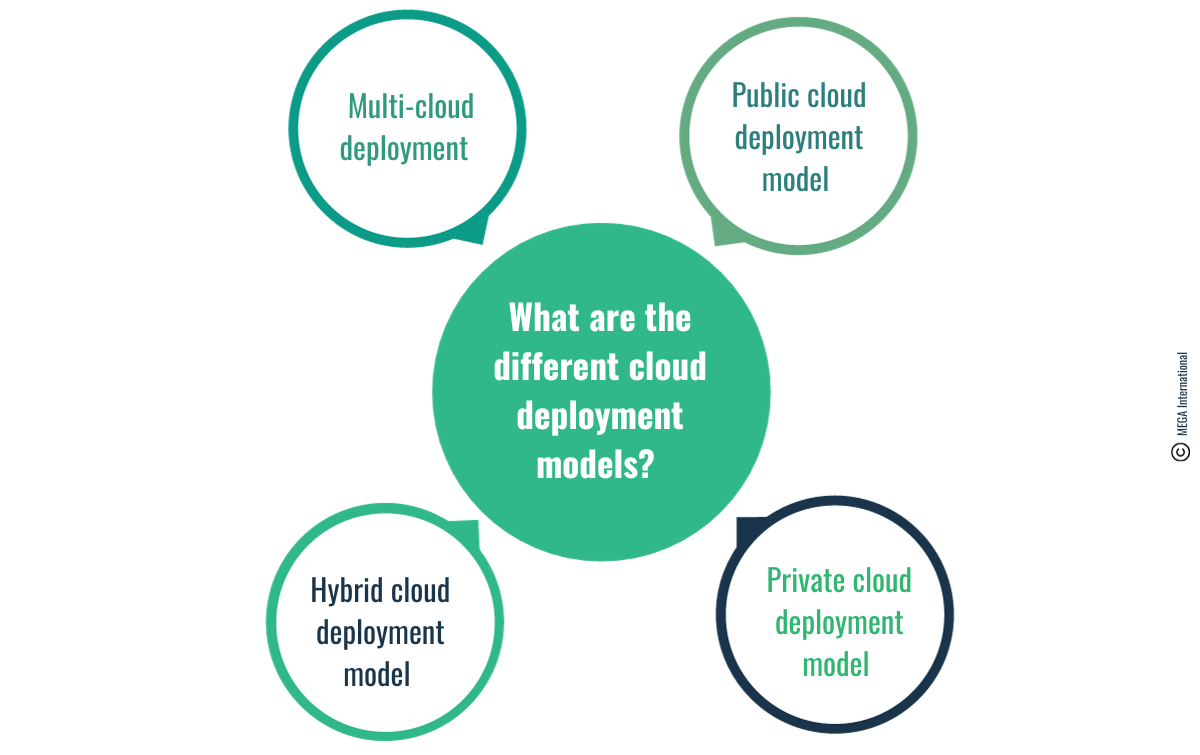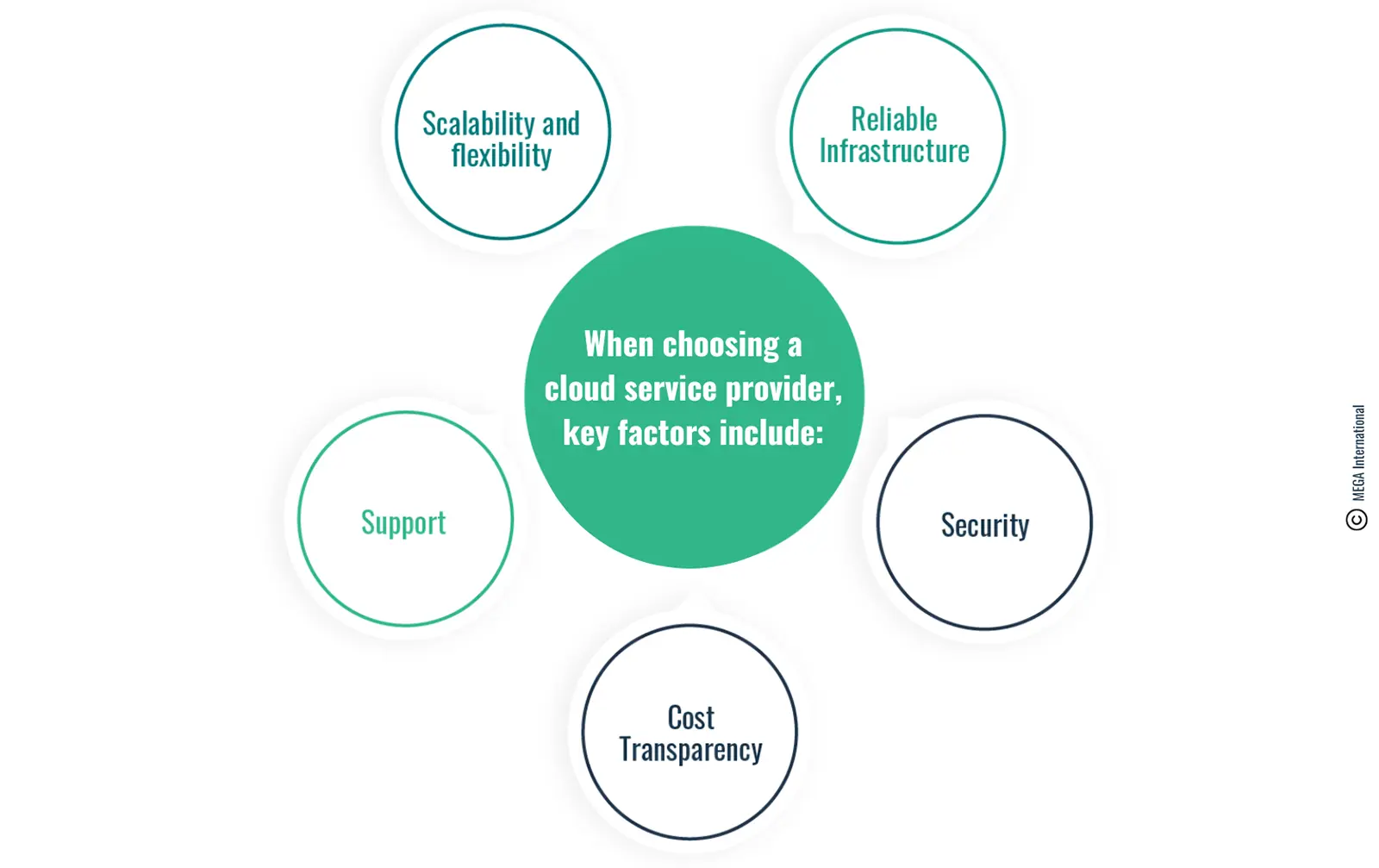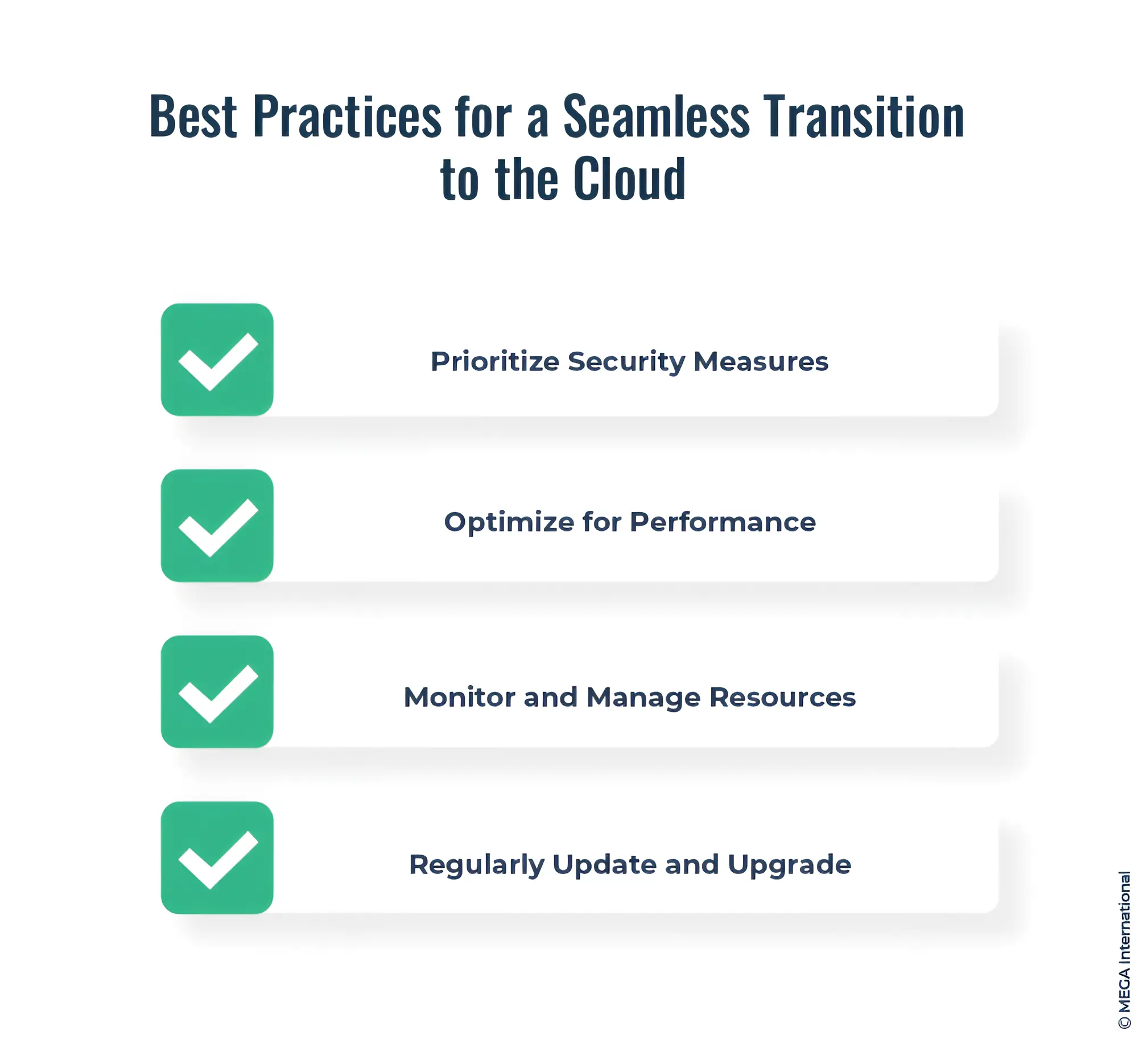
Cloud Deployment: Simplifying Business Operations and IT Infrastructure
In recent years, the cloud has revolutionized the way businesses operate. Cloud deployment, or cloud computing, has become essential to every organization's IT strategy.
With the cloud, businesses can store and access data and applications over the internet instead of relying on physical hardware or traditional on-premises servers. Next, we will delve into cloud deployment, exploring its benefits, challenges, and best practices.
What is Cloud Deployment?
Cloud deployment refers to installing and implementing cloud-based applications and infrastructure. Simply, it involves deploying software or services on remote servers connected to the internet instead of running them on local servers or personal computers.
Cloud deployment offers a wide range of services, including Infrastructure as a Service (IaaS), Platform as a Service (PaaS), and Software as a Service (SaaS). IaaS provides businesses virtualized computing resources such as machines, storage, and networks.
This allows businesses to scale their infrastructure up or down based on their needs without needing physical hardware. PaaS provides a platform for businesses to develop, test, and deploy applications without worrying about the underlying infrastructure.
SaaS offers ready-to-use software applications accessed over the Internet, eliminating businesses needing to install and maintain software on their computers.
What are the different cloud deployment models?
Cloud computing offers a range of deployment models that cater to the diverse needs of organizations in terms of scalability, control, and cost-effectiveness. The most common deployment models include public, private, hybrid, and multi-cloud.

Public cloud deployment model
Public cloud deployment involves using cloud services from a third-party provider like Amazon Web Services (AWS), Microsoft Azure, or Google Cloud Platform.
This model offers a high level of scalability, as resources can be quickly provisioned or de-provisioned on demand. It is cost-effective as organizations only pay for the resources they use, avoiding upfront infrastructure costs. However, data security and privacy concerns may arise as organizations rely on external providers.
Private cloud deployment model
Private cloud deployment, on the other hand, involves establishing a cloud infrastructure within an organization's premises.
This model offers greater control and security as the infrastructure is dedicated to a single organization. It provides the flexibility to customize the cloud environment according to specific requirements, making it suitable for organizations with strict compliance regulations or sensitive data.
However, it requires a significant upfront investment in hardware, software, and maintenance.
Hybrid cloud deployment model
Hybrid cloud deployment combines the benefits of public and private clouds by integrating both environments. Organizations can leverage the scalability and cost-effectiveness of public clouds while maintaining control over critical applications and data in a private cloud.
This model allows seamless data transfer and workload migration between the two environments. It is ideal for organizations with fluctuating workloads or those looking to gradually transition from on-premises infrastructure to the cloud.
Multi-cloud deployment
Multi-cloud deployment involves utilizing multiple cloud service providers to leverage the unique capabilities of each provider. This model offers greater flexibility and avoids vendor lock-in.
Organizations can choose the best services from different providers to optimize performance, cost, and security. However, managing multiple providers can be complex and require additional resources and expertise.
Factors to consider for successful deployment
Several factors need to be considered when considering the successful deployment of any project. First and foremost, it is essential to have a well-defined plan in place. This includes clear objectives, a detailed timeline, and a comprehensive strategy outlining the steps necessary to succeed.
Additionally, having the necessary resources and support in place is crucial. This includes having the right team members with the required skills, expertise, technology, and equipment. Without these resources, the deployment process can be hindered and ultimately fail.
Effective communication is crucial for successful deployment. This means communicating with stakeholders to ensure everyone is aligned on the project goals and progress and keeping all team members informed and engaged throughout the process. Additionally, flexibility and adaptability are key.
Deployment plans may need to be adjusted as unexpected challenges or opportunities arise. Being able to pivot and make necessary changes on the fly can significantly enhance the chances of success.
Finally, continuous monitoring and evaluation are essential for a successful deployment. Regularly assessing progress and identifying areas for improvement allows for ongoing adjustments and ensures that the project stays on track toward its goals. When considered and addressed, these factors can significantly contribute to the successful deployment of any project. It is essential to approach deployment with careful planning, the right resources, effective communication, flexibility, and ongoing evaluation to maximize the chances of success.
Choosing the right cloud service model
Choosing a suitable cloud service model is crucial for any organization migrating its data and applications to the cloud. There are three main service models to consider: Infrastructure as a Service (IaaS), Platform as a Service (PaaS), and Software as a Service (SaaS).
Infrastructure-as-a-Service (IaaS)
IaaS provides the highest level of flexibility by allowing organizations to rent virtual machines, storage, and other infrastructure resources from a cloud provider.
This model gives organizations complete control over their infrastructure and allows for more customization and configuration options. However, this also means that organizations are responsible for managing and maintaining the underlying hardware and software, which requires a certain degree of technical expertise.
Platform-as-a-Service (PaaS)
On the other hand, PaaS provides a platform on which organizations can build, deploy, and manage their applications without worrying about the underlying infrastructure. This allows organizations to focus on developing their applications and not be burdened by infrastructure management tasks.
PaaS is ideal for organizations prioritizing speed and efficiency in application development and deployment.
Software-as-a-Service (SaaS)
SaaS is a cloud service model where organizations can access software applications over the internet on a subscription basis. This model eliminates the need for organizations to install and maintain software locally, as everything is hosted and managed by the service provider.
SaaS is ideal for organizations that need ready-to-use software applications without the hassle of installation and maintenance.
Organizations must consider their specific requirements and priorities when choosing a suitable cloud service model. Factors such as the level of control and flexibility needed, the expertise available within the organization, and the cost implications should all be considered.
It is also essential to consider future scalability and the ability to integrate with existing systems. By carefully evaluating these factors, organizations can make an informed decision and choose the cloud service model that best suits their needs.
Which cloud service model should I choose for deployment?
One of the most important factors is the reliability and availability of the provider's infrastructure. When choosing a cloud service provider, key factors include:

- Reliable Infrastructure: Choosing a provider with a robust and redundant infrastructure is crucial to ensure that your data and applications will be available and accessible at all times.
- Scalability and flexibility: Choose providers that can accommodate your changing business needs.
- Security: Prioritize strong data protection measures.
- Support: Ensure responsive customer service and transparent service level agreements.
- Cost Transparency: Select providers with transparent pricing aligned with your budget.
Evaluating these factors thoroughly will help you choose the best cloud service provider for your business needs.
Best Practices for a Seamless Transition to the Cloud

- Prioritize Security Measures: Implement robust security protocols, including encryption and multi-factor authentication, to safeguard data.
- Optimize for Performance: Monitor and optimize the performance of cloud resources to ensure optimal user experiences.
- Monitor and Manage Resources: Regularly assess resource usage to avoid unnecessary expenses and ensure efficient operations.
- Regularly Update and Upgrade: Stay updated with the latest cloud technologies and updates to benefit from improved features and security enhancements.
Benefits of cloud deployment
One of the key benefits of cloud deployment is its flexibility. With the cloud, businesses can easily access their data and applications from anywhere worldwide, as long as they have an internet connection.
This has become especially important in the age of remote work, as employees need to be able to access their work tools and files from home or on the go.
Additionally, cloud deployment allows businesses to quickly scale their resources up or down based on demand. This means businesses can quickly adapt to changes in workload or seasonal fluctuations without costly hardware investments.
Advantages

- Scalability: Cloud resources can be easily scaled up or down based on the demand, allowing businesses to handle varying workloads efficiently.
- Cost Savings: Cloud deployment can provide significant savings by eliminating the need for on-premise infrastructure and associated maintenance costs.
- Flexibility: Cloud deployment allows easy access to computing resources from anywhere, making it convenient for businesses and remote teams.
- Ease of Management: Cloud service providers manage and maintain the underlying infrastructure, allowing businesses to focus on their core operations.
- Reliability: Cloud environments are designed to be highly available and resilient, ensuring minimal downtime and data loss.
- Disaster Recovery and Security: Cloud services often include built-in disaster recovery mechanisms, ensuring data remains safe even in worst-case scenarios.
The Future of Cloud Deployment
AI and Automation Integration
As AI and automation continue to advance, they will become integral to cloud deployment, optimizing resource allocation and enhancing efficiency.
Edge Computing Advancements
Edge computing, which processes data closer to its source, will complement cloud deployment, reducing latency and enhancing real-time processing capabilities.
Summary
Cloud deployment has transformed how businesses operate their IT infrastructure. With its flexibility and cost-effectiveness, the cloud has become an essential tool for businesses seeking to streamline their operations, increase productivity, and stay competitive in the modern digital landscape. As the cloud continues to evolve, it will undoubtedly become even more integral to business success in the future.
FAQs
Cloud deployment refers to deploying a software application or a service on a cloud infrastructure instead of traditional on-premise servers or data centers. It involves utilizing cloud computing resources and services to host, manage, and scale the application or service.
There are mainly three types of cloud deployment models:
- Public Cloud: In this model, a third-party cloud service provider, such as Amazon Web Services (AWS) or Google Cloud Platform (GCP), provides the cloud service and infrastructure. The resources are shared among multiple users and applications.
- Private Cloud: The cloud infrastructure is dedicated to a single organization in a private cloud deployment. It can be hosted on-premise or by a third-party provider. The organization has more control over security and customization.
- Hybrid Cloud: A hybrid cloud deployment combines both public and private clouds, allowing organizations to leverage both benefits. It is helpful for handling varying workloads and provides flexibility in terms of scalability and security.
Cloud deployment offers several advantages:
- Scalability
- Cost Savings
- Flexibility
- Ease of Management
- Reliability
- Disaster Recovery and Security
Yes, cloud deployment can benefit businesses of all sizes and industries, but the choice of deployment model depends on specific needs.
Yes, on-premises applications can be migrated to the cloud with proper planning and integration.
Cloud services often have built-in redundancy and backup mechanisms, ensuring data recovery in case of any unforeseen events.
While cloud services offer numerous benefits, there are still risks related to data security, privacy, and potential downtime.


